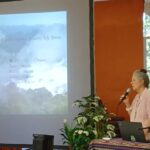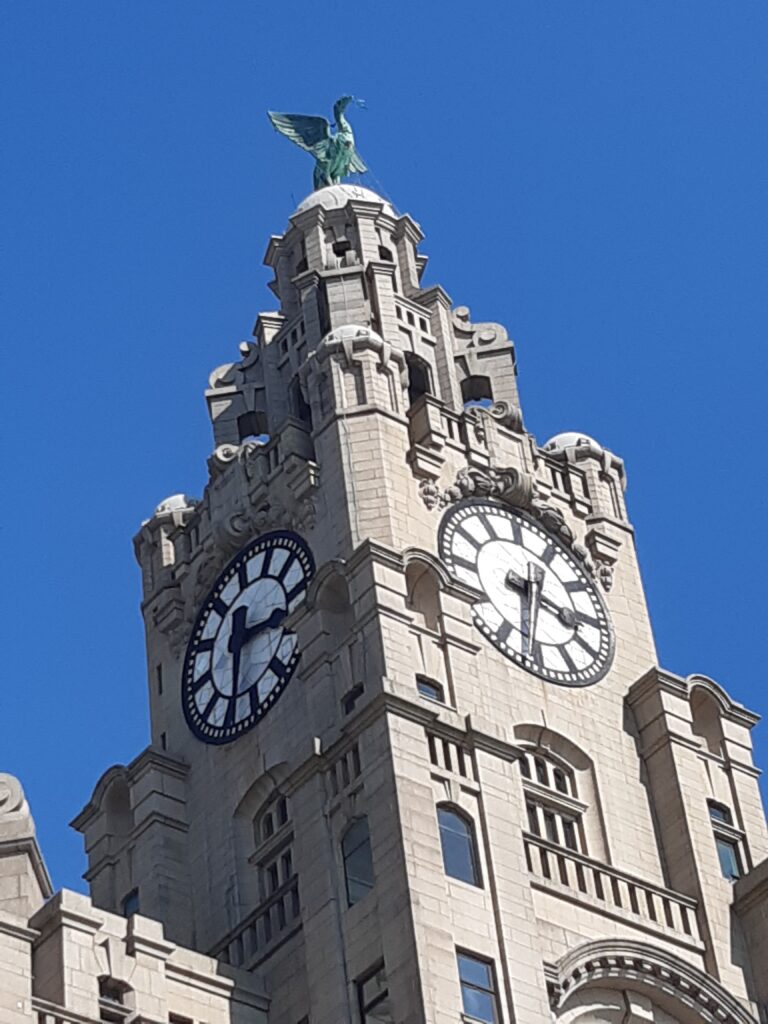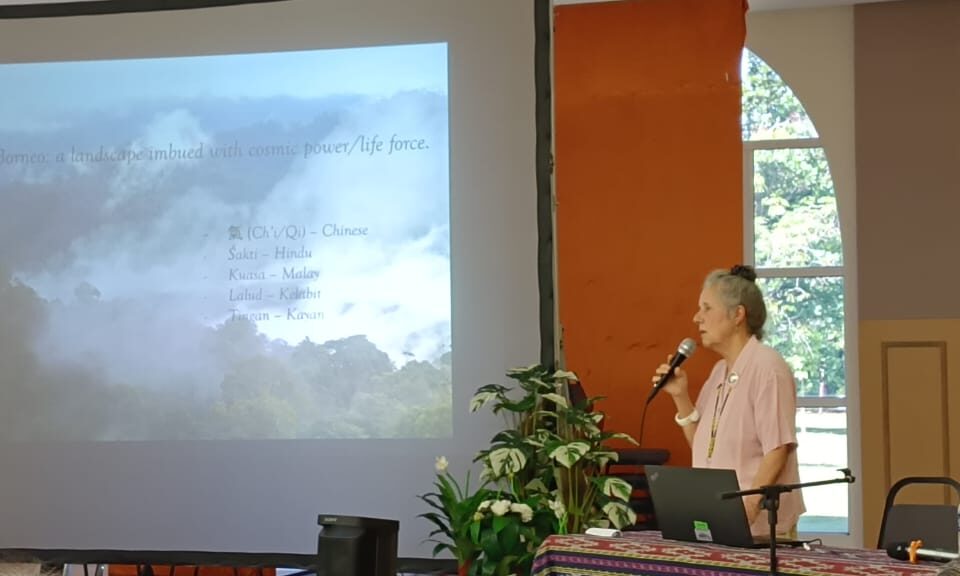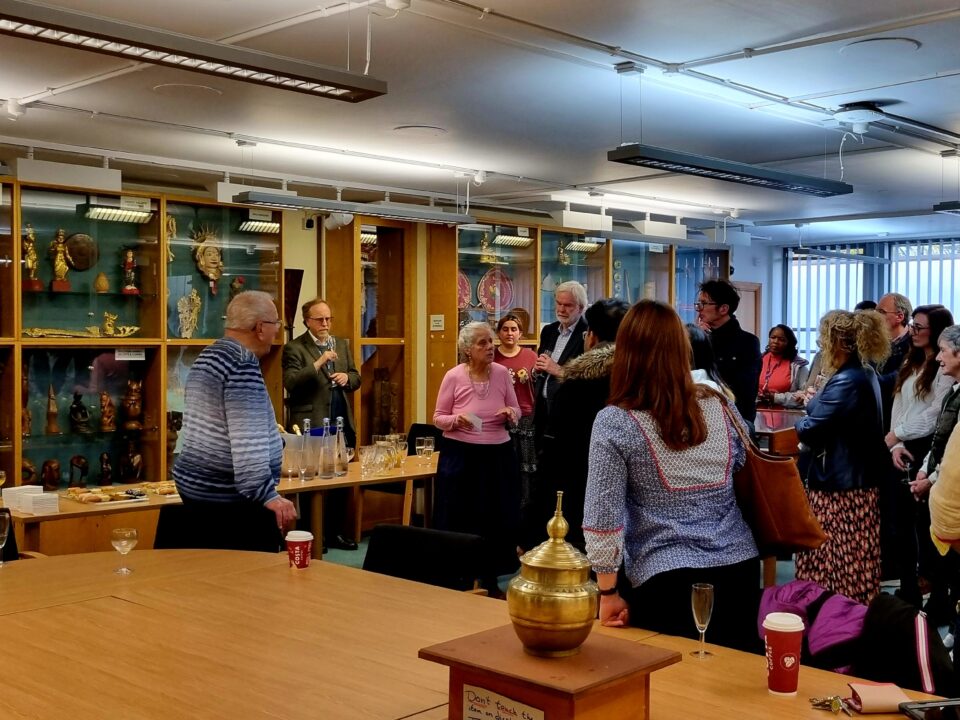
Here Be Dragons in Kota Kinabalu!
27 January 2025BBC Podcast about the Hull SE Asia Museum
13 November 2025I was really delighted to attend MEG’s 50th anniversary conference on 24-25 April 2025. Though I’ve been involved with museums for decades, making collections and curating exhibitions, this was my first experience of MEG. It was a great pleasure to see familiar faces and meet lots of new people.

The conference was held in Liverpool, a city I had never before visited, and I was bowled over by the beauty of the city, especially the waterfront where the conference was held, in the Museum of Liverpool. The day before the conference, I was lucky enough to participate in the tour of the World Cultures Collection at the World Museum in Liverpool offered by Meghan Backhouse, Chair of MEG and lead curator of Global Collections at National Museums Liverpool. I also managed to fit in a visit to the wonderful exhibition on bees in the World Museum.
The focus of the conference this anniversary year was Help! Care and Support in Museums – appropriate in Liverpool, the home of the Beatles. A wide range of different aspects of care and support were discussed by speakers, including care for local communities, particularly those from the places of origin of objects and those with access difficulties; help in repatriating objects in the context of decolonialisation; care for staff; defining what is meant by ‘help’ and how it can sometimes be unhelpful; help in maintaining collections; help in researching collections. I spoke at the conference about the Hull SE Asia Museum, which I’ve recently taken over as Curator, and the role of help from volunteers (of whom I’m one!) in bringing the museum back to life after a long period of dormancy.
Decolonisation was an important area of discussion at the conference. This is, of course, a significant issue in the world of museum ethnography at present. As Steven Hooper, Director of the Sainsbury Research Unit at the University of East Anglia, pointed out, this debate has been an uncomfortable one for many museum ethnographers, who have come across as the handmaidens of colonialism. There have been a wide range of initiatives in place to try to address it, including repatriation of objects and the establishment of links between museums and communities from the parts of the world from which museum objects derive. Many of the speakers discussed initiatives of these kinds. However, with the cuts in funding that have affected museums it is often difficult to address this issue as effectively, and in as nuanced a way, as curators would wish – something to which many of those to whom I spoke alluded, both in their presentations and in discussions I had with them.
A highlight of the conference, for me, was meeting Maria Cristina Juan and her husband Jovi Juan, and watching the film, Gónô Tmutul: Building a House of Stories, which they made about an Englishwoman, Billie Riley’s, journey to return objects she had acquired from the Tboli people of Lake Sebu, Philippines, 45 years after living with them as a teacher. The film brought out the central importance of storytelling. It highlighted two types of story – that of Billie Riley herself on the one hand and the stories elicited by the objects for the Tboli people themselves on the other, about the people from whom Billie originally received the objects, the parents and grandparents of the people she met on her return visit to return the objects.
The emphasis on stories highlighted by Maria Cristina Juan and Jovi Juan’s film is of course central to communicating, and stories are at the centre of our work as museum curators.
The importance of stories in relation to objects was brought out by a number of speakers. These included Santiago Valencia Parra, Digital Curator at Santo Domingo Centre of Excellence for Latin American Research (SDCELAR), who is working in five sites in Central and South America, who spoke about the importance of bringing in visitors from the areas in which they are carrying out research to elicit stories about objects; and Gabriel Olugbenga Matesun of the University of Ibadan Archaeology and Anthropology, who spoke about the importance of storytelling in relation to Yoruba pots.
Stories connecting individuals and objects are often grounded in ancestral connections. This can lead to an embodied sense of connection with objects, such as that felt by Hawaiian and Maori guests visiting the collection at the Sainsbury Centre at the University of East Anglia, as described by Steven Hooper in his presentation. He suggested that this sense of embodied connection is something that is built up through interaction with objects, such that even the curators of the objects themselves may feel it, since they feel themselves to be descended from a line of curators who have cared for the objects.
I came away from the conference excited to get on with revitalising the Hull SE Asia Museum, in the knowledge that I can call on colleagues met at the conference – both old friends and new acquaintances – in doing this. The title of the 25th anniversary conference was well chosen – MEG truly does act as a source of care and support for its members!


